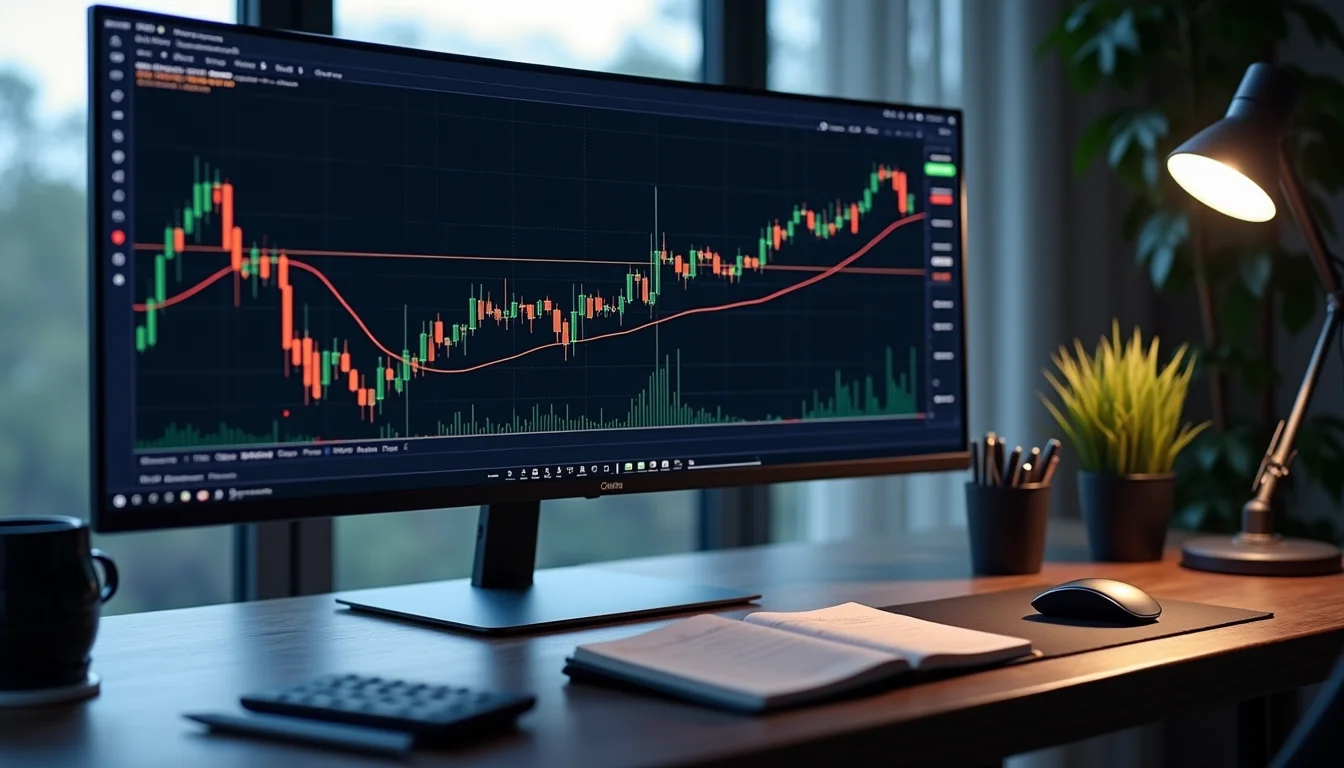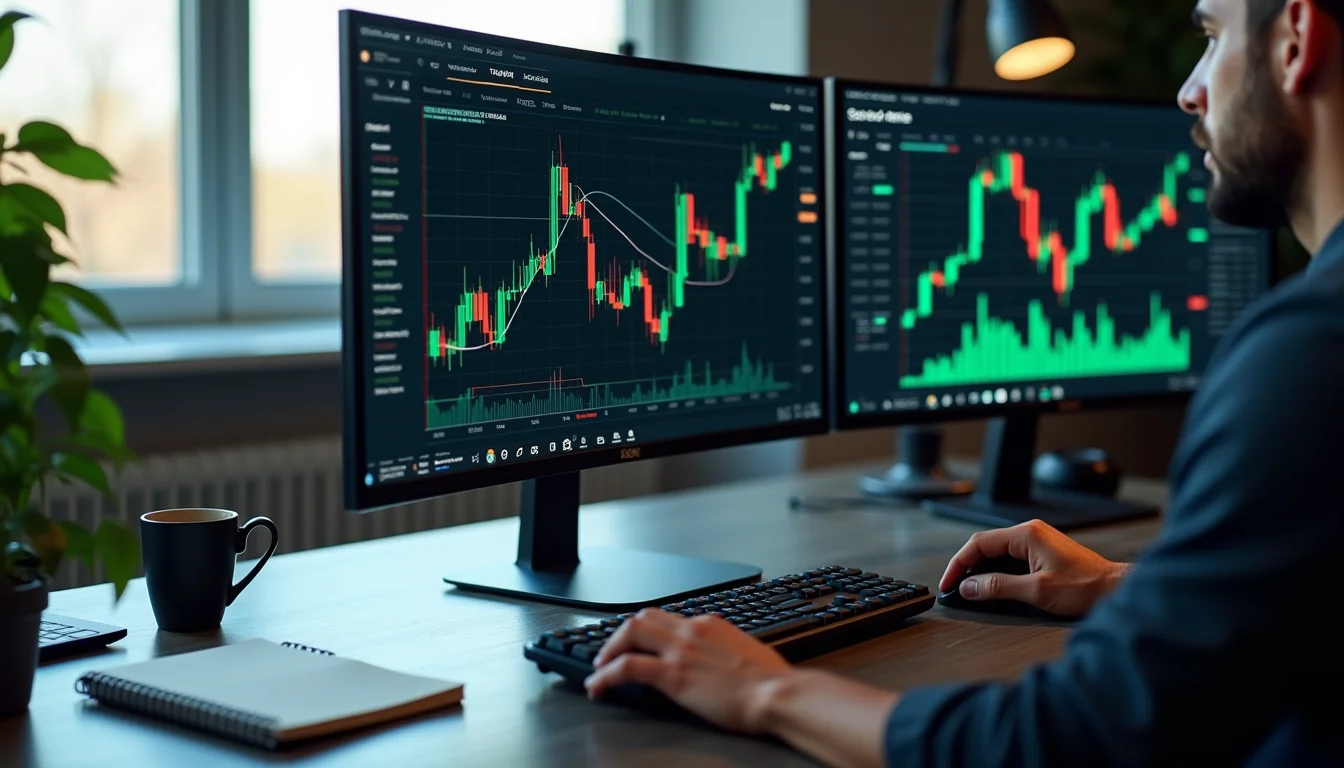The Reality of Algorithmic Trading in Today's Markets
I remember sitting at my trading desk back in 2018, watching my latest creation—a beautifully complex neural network—completely fail to predict EUR/USD movements. The model had performed flawlessly in backtesting, but real market conditions? It was like watching a Formula 1 car trying to navigate a muddy field. That painful experience taught me more about AI trading tips than any textbook ever could. The truth is, most algorithmic traders are approaching this wrong. They're either over-engineering their systems or relying too heavily on historical data without understanding market microstructure.
Over the past decade, I've seen countless traders jump into algorithmic trading expecting instant profits, only to discover that building robust systems requires more than just coding skills. It demands market intuition, risk management discipline, and a deep understanding of what makes strategies actually work in live trading. The landscape has changed dramatically—where simple moving average crossovers might have worked in 2010, today's markets require sophisticated approaches that can adapt to changing conditions.
In this comprehensive guide, I'll share the AI trading tips and strategies that have consistently worked for me across different market regimes. We'll move beyond theoretical concepts and dive into practical implementation, covering everything from data preprocessing to position sizing. Whether you're developing strategies in Pine Script for TradingView or building custom solutions, these insights will help you avoid common pitfalls and accelerate your path to consistent profitability.
Data Quality: The Foundation of Every Successful AI Strategy
Before we even discuss algorithms or indicators, let's address the most critical component: your data. I've seen more strategies fail due to poor data quality than any other single factor. When I first started, I made the classic mistake of using whatever data was readily available without considering its limitations.
Understanding Different Data Types and Their Applications
Not all market data is created equal. The type of data you use should match your trading timeframe and strategy objectives. For high-frequency strategies, tick data is essential, but for swing trading, properly cleaned OHLC data might be sufficient. Here's what I've found works best for different approaches:
- Tick data: Essential for market microstructure analysis and high-frequency strategies. The challenge is storage and processing power—a single currency pair can generate millions of ticks per day
- OHLC data: Most practical for daily and intraday strategies. The key is ensuring your data provider handles corporate actions and dividend adjustments properly
- Fundamental data
Data Cleaning and Preprocessing Techniques
Raw market data is messy. Missing values, outliers, and data errors can completely derail your models. Here's my standard preprocessing workflow that has saved me countless headaches:
- Remove obvious outliers—prices that move more than 10 standard deviations from the mean in a single period
- Fill missing values using appropriate methods (forward fill for prices, interpolation for volumes)
- Adjust for splits and dividends—this is crucial for equity strategies
- Normalize data across different instruments when building multi-asset strategies
I learned this the hard way when a data glitch caused my system to see a 50% drop in Apple shares that never actually happened. The model reacted by liquidating positions across my entire portfolio, costing me thousands in unnecessary transaction costs.
Feature Engineering: Creating Predictive Variables That Matter
Most traders focus on standard technical indicators, but the real edge comes from creating custom features that capture market dynamics specific to your trading style. Through years of experimentation, I've identified several feature categories that consistently add value.
Technical Features Beyond Standard Indicators
While RSI and MACD have their place, consider these more sophisticated approaches:
- Regime detection features
- Liquidity measures
- Cross-asset correlations
- Liquidity measures
Market Microstructure Features
For intraday strategies, order book dynamics can provide significant predictive power. I've had particular success with:
Order flow imbalance—measuring the net buying or selling pressure in the market. One specific implementation I use calculates the volume-weighted difference between market buy and sell orders over 15-minute windows. When this indicator reaches extreme levels (typically beyond 2 standard deviations from its 20-day moving average), it often precedes short-term reversals.
Another powerful feature is the volume-weighted average price (VWAP) deviation. When prices trade significantly above or below VWAP, it often indicates exhausted moves. I've built mean reversion strategies around this concept that have achieved Sharpe ratios above 1.5 in live trading.
Model Selection and Validation: Finding the Right Tool for the Job
The allure of complex machine learning models is strong, but simpler models often outperform in noisy financial markets. My approach has evolved toward using ensemble methods that combine multiple model types.
Choosing Appropriate Algorithms
Different market conditions call for different modeling approaches. Here's my framework for matching models to trading styles:
- Mean reversion strategies
- Trend following
- Volatility trading
- Trend following
One of my most successful implementations combines a random forest classifier for regime detection with simple moving averages for trend following. The random forest identifies when markets are in strong trending regimes (with about 75% accuracy in backtesting), and the system only takes trend-following signals during these periods.
Robust Validation Techniques
The biggest mistake I see algorithmic traders make is overfitting to historical data. Standard train-test splits aren't sufficient for financial time series. Here's my validation framework:
- Walk-forward analysis with expanding windows—this mimics how you'll actually use the model in production
- Multiple market regime testing—ensure your strategy works across bull markets, bear markets, and sideways periods
- Out-of-sample testing on completely unseen data—I typically reserve the most recent 20% of data for final validation
When I developed the TradeMaster Pro Strategy, we spent more time on validation than on model development. The result was a system that maintained consistent performance across the 2020 market crash, the 2021 meme stock frenzy, and the 2022 bear market.
Risk Management: The Unsung Hero of Algorithmic Trading
I've seen brilliant trading algorithms fail due to poor risk management. No matter how accurate your predictions are, improper position sizing or inadequate stop-losses will eventually destroy your account.
Dynamic Position Sizing Frameworks
Fixed position sizes don't account for changing market conditions or varying trade quality. My approach uses a multi-factor framework:
- Base position size determined by account risk (typically 1-2% of capital per trade)
- Adjustments based on recent strategy performance—reduce size after drawdowns, increase gradually during winning streaks
- Volatility scaling—smaller positions during high volatility periods, larger during low volatility
- Correlation adjustments—reduce position sizes when taking multiple trades in correlated instruments
Stop-Loss and Take-Profit Optimization
Most traders set arbitrary stop-loss levels. A better approach is to base exits on market structure and strategy characteristics. For my trend-following systems, I use:
Volatility-based stops set at 2.5 times the average true range (ATR). This allows trades room to breathe while protecting against catastrophic losses. For take-profit levels, I prefer trailing stops based on recent swing highs/lows rather than fixed price targets.
One specific example: In my EUR/USD breakout strategy, the initial stop is set at 2.5x the 14-period ATR from entry. Once the trade moves 1.5x ATR in my favor, the stop moves to breakeven. Beyond 2.5x ATR profit, I use a 1.5x ATR trailing stop. This approach has captured several multi-hundred pip moves while minimizing losses on false breakouts.
Implementation and Execution: Turning Models Into Profits
A perfectly backtested strategy means nothing if it can't be executed effectively in live markets. Execution quality often separates profitable algorithms from losing ones.
Choosing the Right Platform and Tools
Your choice of trading platform and programming language should match your strategy requirements. For most retail traders, TradingView with Pine Script provides an excellent balance of flexibility and ease of use. The Pine Script documentation is comprehensive, and the platform handles most of the infrastructure challenges.
For more complex strategies requiring custom order types or direct market access, you might need to graduate to professional platforms. The key is matching tool complexity to your actual needs—don't overcomplicate your infrastructure.
Slippage and Transaction Cost Modeling
Backtests that ignore transaction costs are dangerously optimistic. My rule of thumb: assume 0.05% slippage per trade for liquid instruments during normal market hours, and 0.15% during volatile periods or for less liquid assets.
When I first started, I failed to account for the bid-ask spread in my high-frequency mean reversion strategy. The model showed 25% annual returns in backtesting but lost money in live trading because the assumed entry and exit prices weren't achievable. Now, I always include spread costs and realistic slippage assumptions in my testing.
Advanced AI Trading Tips for Seasoned Algorithmic Traders
Once you've mastered the basics, these advanced techniques can provide additional performance edges. I've implemented these across my portfolio with measurable improvements in risk-adjusted returns.
Regime-Adaptive Parameter Optimization: Instead of using fixed parameters, create systems that automatically adjust based on market conditions. For example, in my volatility breakout strategy, the lookback period for calculating volatility ranges adjusts based on recent market stability. During calm periods (VIX below 15), I use a 20-day lookback. During volatile periods (VIX above 25), I switch to a 10-day lookback to respond faster to changing conditions.
Multi-Timeframe Confirmation: Combine signals across different timeframes to improve entry quality. My preferred approach uses the 4-hour chart for direction bias, the 1-hour for timing, and the 15-minute for precise entries. When all three align, the win rate improves by approximately 15% compared to single-timeframe signals.
Dynamic Correlation Filters
The journey to profitable algorithmic trading requires combining all these elements into a cohesive system. It's not about finding a single magical indicator or complex machine learning model—it's about building a robust process that can adapt to changing market conditions. The most valuable lesson I've learned is that simplicity usually beats complexity. Some of my most reliable strategies use straightforward logic combined with sophisticated risk management. The TradeMaster Pro Strategy we offer embodies this philosophy—it uses clean, interpretable signals with dynamic position sizing and multiple layers of risk controls. If you're serious about developing your own systems, I recommend starting with the frameworks I've outlined here. Focus first on data quality and risk management—these foundations will serve you well regardless of which predictive models you eventually choose. And remember that continuous improvement is essential; markets evolve, and your systems must evolve with them. Ready to take your algorithmic trading to the next level? Our team is always available to discuss specific challenges you're facing—feel free to reach out directly with questions about implementation or strategy development. How much historical data do I really need for reliable backtesting? It depends on your strategy timeframe, but I generally recommend at least 5-10 years of daily data or 2-3 years of intraday data. The key is having enough data to include multiple market regimes—bull markets, bear markets, and sideways periods. For day trading strategies, focus more on having high-quality tick data across different volatility environments rather than extremely long historical periods. What's the single biggest mistake you see algorithmic traders make? Over-optimization without understanding why their strategies work. I've seen traders with beautifully backtested equity curves that collapse in live trading because they don't understand the economic rationale behind their signals. Always ask yourself: What market inefficiency is this strategy capturing, and why should it continue working in the future? How do I know when to abandon a strategy that's underperforming? Establish clear performance benchmarks before going live. If a strategy underperforms its historical expectations by more than 2 standard deviations over a meaningful sample size (typically 50-100 trades), it's time to investigate. Don't abandon strategies too quickly—even good systems have drawdown periods—but have objective criteria for when to pull the plug. Can I successfully combine multiple AI trading strategies in one portfolio? Absolutely—diversification across uncorrelated strategies is one of the most powerful tools in algorithmic trading. The key is understanding how your strategies interact during different market conditions. I typically allocate to 3-5 non-correlated strategies and monitor their combined risk characteristics using value-at-risk (VaR) analysis.Putting It All Together: Building Your Systematic Edge
Frequently Asked Questions About AI Trading



